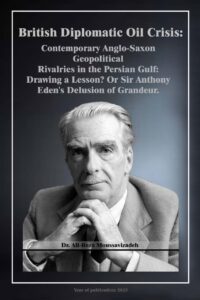The British Imperial Establishment, Post Imperial Era, and the ‘Churchillian’ World View, 1945-2016. (Adjustments & Challenges in Contemporary British Diplomatic Strategy)
31
growth of
institutional ownership. “These individual property owners are the
major beneficiaries of institutional
property-ownership, since these institutions
operate in such a way as to generate and reproduce the
privileges and advantages
of the members of the dominant status group.”43 This structure of relationships
creates a sharp separation between those who
control and benefit from the use of
capital and those who do not. Whatever the internal divisions there may
be within
the elite, they are secondary in importance to their common interest in the
continuing success
of the system of big business as a whole.
It could
be said once more that the traditional outlook and values have been
maintained. Furthermore, as we have seen,
“the dominant status group – the
establishment – has accommodated itself to the creation of a business
class, and
is continuing to be a key mechanism in the articulation of the economy with the
political
system.”44
Although
the privileged classes in Britain have constantly compromised
with each other, and a cultural, economic and
political unity has evolved among
them, differences in the market situation between the landed class, the
City
institutions and manufacturers continues to exist. This diversity has to do with the
industrial
revolution. In the eighteenth century, industry was regarded as a
relatively unimportant activity.
Manufacturing was the preserve of merchants
who controlled the production process through their control over
the buying and
selling of goods and through their ability to offer credit. In the 1770s however,
the
growth of industrial production accelerated and a number of technical
innovations were taken up and led to
the revolutionary technologies of cotton and
iron production. “The merchants who had accumulated both
wealth and
experience in industrial production were able to take up the opportunities offered
by the
growth of trade and so could invest surplus capital to meet the demand
which had been stimulated by the
growth in the population.”45 However, the
significance of this so
called ‘industrial revolution’ was not at first realised by
Pages: 1 2 3 4 5 6 7 8 9 10 11 12 13 14 15 16 17 18 19 20 21 22 23 24 25 26 27 28 29 30 31 32 33 34 35 36 37 38 39 40 41 42 43 44 45 46 47 48 49 50 51 52 53 54 55 56 57 58 59 60 61 62 63 64 65 66 67 68 69 70 71 72 73 74 75 76 77 78 79 80 81 82 83 84 85 86 87 88 89 90 91 92 93 94 95 96 97 98 99 100 101 102 103 104 105 106 107 108 109 110 111 112 113 114 115 116 117 118 119 120 121 122 123 124 125 126 127 128 129 130 131 132 133 134 135 136 137 138 139 140 141 142 143 144 145 146 147 148 149 150 151 152 153 154 155 156 157 158 159 160 161 162 163 164 165 166 167 168 169 170 171 172 173 174 175 176 177 178 179 180 181 182 183 184 185 186 187 188 189 190 191 192 193 194 195 196 197 198 199 200 201 202 203 204 205 206 207 208 209 210 211 212 213

